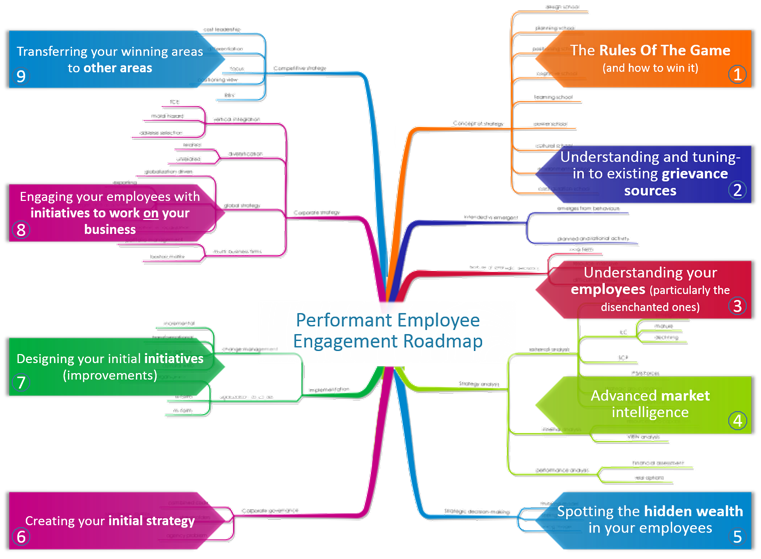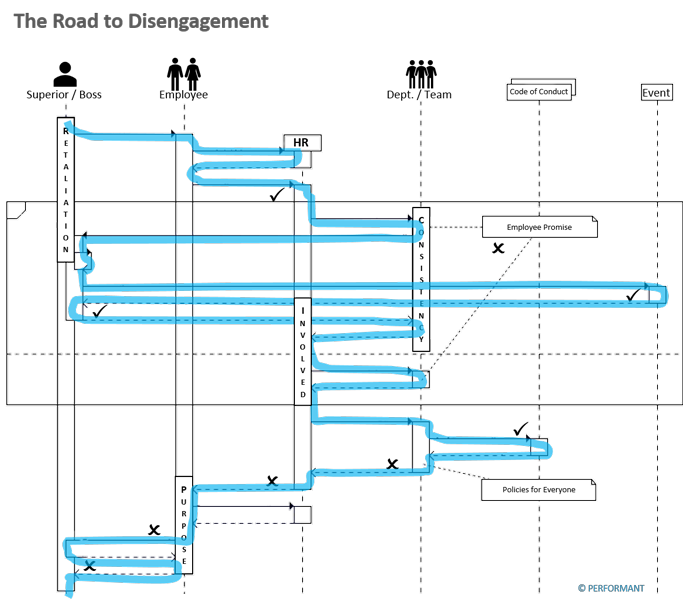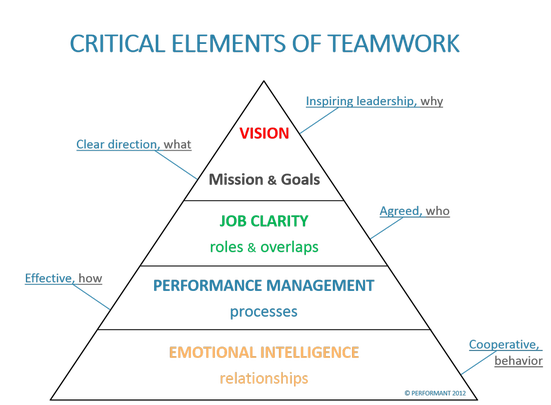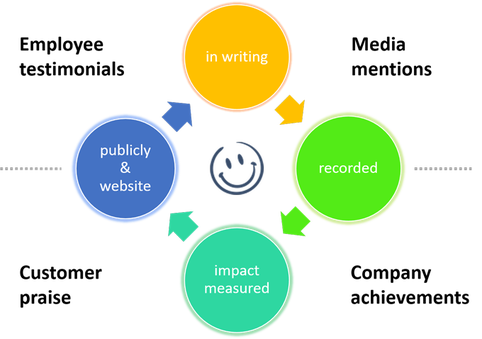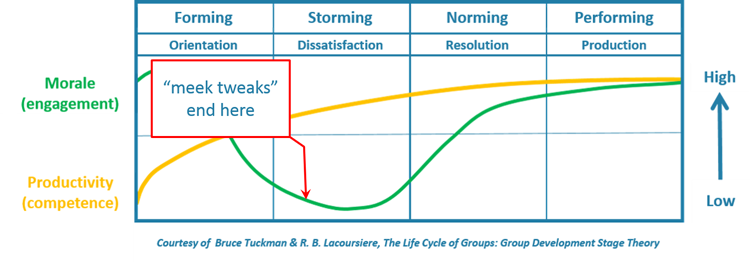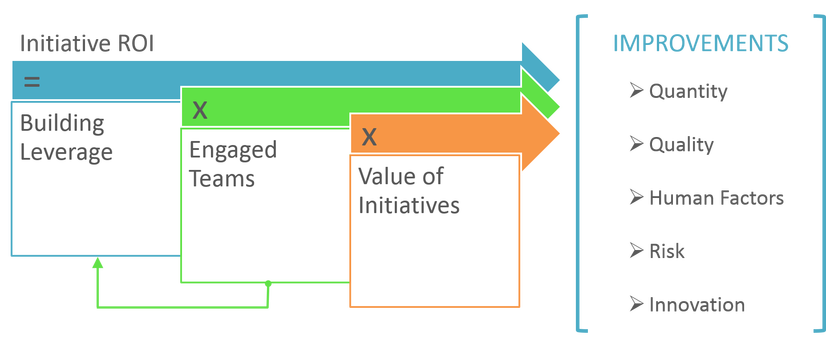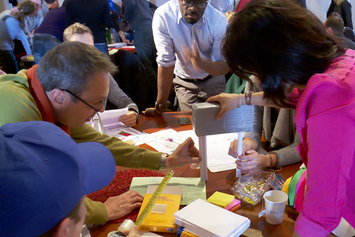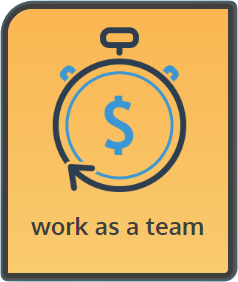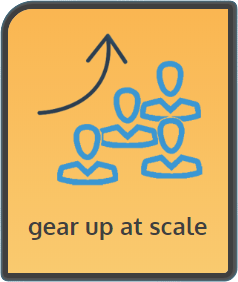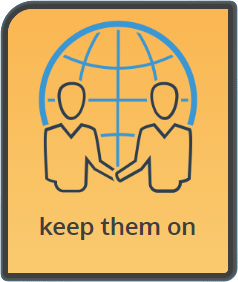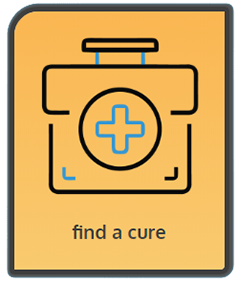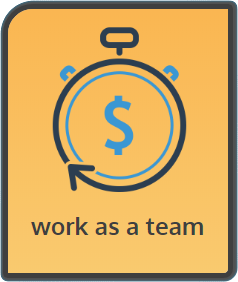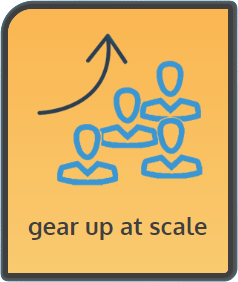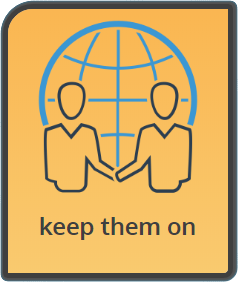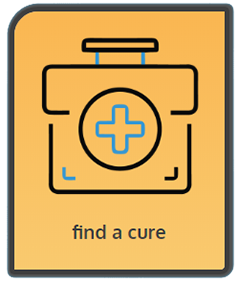For a moment, let's assume: "most people work for their own self-interest"
Here's some good news, you've come to the right place. Watch your employee engagement score soar as you follow our step-by-step process to align everyone's interest, particularly your organization's.
We measure, think, and deliver engagement to drive performance at individual, team and organisational levels. Performant Employee Engagement Methodology™, (PEER) achieves hard business outcomes such as talent retention, customer loyalty and increased profitability.
Whether your employee engagement is at issue or you simply don’t know how to increase it any further, you’ll find this useful. It’s an overview of Performant Employee Engagement Roadmap™, (PEER), which we use with all our clients.
Beyond best practices
Someone suggested we write an article about best practices for employee engagement. You know the kind of thing: magic slogans that engage employees, "key values" on posters, winning behaviors, etc. Unfortunately, that little box of tricks doesn’t take you very far. In fact, it sometimes takes you nowhere.
The real best practice isn’t a particular type of practice at all. It’s a well-defined, systematic process—a series of steps you need to take.
The Performant Employee Engagement Roadmap is significantly different from what most people are doing. We’ve mentioned it in conference talks, but this is the first time we’ve published an overview of it. It doesn’t involve shoot-from-the-hip guesswork, and it doesn’t have the excitement and appeal of magic slogans. In fact, in many respects it looks a lot like hard work. It requires intelligence, experience, craft, and expertise in a wide range of disciplines. But experience has shown that it works, time and time again. It’s what we do every day for our clients.
And we are proud that some of the most sophisticated companies have adopted it; we’ve spent the past few years working with corporate clients — plus some outstanding, forward-looking small businesses. Improvements of over 100% are commonplace.
In summary, it works.
Here it is.
The real best practice isn’t a particular type of practice at all. It’s a well-defined, systematic process—a series of steps you need to take.
The Performant Employee Engagement Roadmap is significantly different from what most people are doing. We’ve mentioned it in conference talks, but this is the first time we’ve published an overview of it. It doesn’t involve shoot-from-the-hip guesswork, and it doesn’t have the excitement and appeal of magic slogans. In fact, in many respects it looks a lot like hard work. It requires intelligence, experience, craft, and expertise in a wide range of disciplines. But experience has shown that it works, time and time again. It’s what we do every day for our clients.
And we are proud that some of the most sophisticated companies have adopted it; we’ve spent the past few years working with corporate clients — plus some outstanding, forward-looking small businesses. Improvements of over 100% are commonplace.
In summary, it works.
Here it is.
The real best practice isn’t a particular type of practice at all. It’s a well-defined, systematic process—a series of steps you need to take.
STEP 1: The Rules of the Game (and how to win at it):
Coming up with your strategy, defining your long-term goals, and deciding how you’ll measure success
measure.
tangible results
achieve.
in 2 days*
Many HR managers start out by creating a list of things to do. We advise you to resist the urge at this stage. Here are a few reasons why:
You need to find out (not guess) why different parts of your business are disengaged
Most clients come to us with a preconceived idea of what should be worked on. Ironically, the opportunities usually lie elsewhere—in their blind spots. First, we insist on discussing the client’s strategy and vision for the business. You need to define or refine the key performance indicators (KPIs) that will ensure you meet your goals.
You don’t yet know why people aren't engaged
At this point, you also don’t know why your employees aren’t engaging, so any suggestions you make would be theoretical rather than based on evidence. From our experience, evidence-based recommendations are much more likely to give breakthrough results than glib “best practice” ones.
You need to experience your business as if being a new employee, and with a “fresh pair of eyes”
It is important to have employee empathy and to understand the thought processes your employees are going through. If you look at your organization from an HR’s perspective, you’ll act like HR. So, if you aren’t already, you need someone to become a new employee of your own organization. (You’d be amazed how many people have never done this.)
Step 2: Understanding and tuning-in to existing sources of disengagement
It’s impossible to improve an organization without understanding its people, what their expectations are, the work culture they would enjoy working in, the things that energize them as well as what turns them off
measure.
tangible results
achieve.
in 2 days*
Take a bird’s-eye view of your organization, identifying the areas that appear to hold the greatest opportunity for improvement.
Seek to understand your entire landscape of disengagement, start where someone first encounters a bad experience or behaviors that are not in line with your values and professional code of conduct. Trace the formal and informal communication trail that such an incident follows through your organization, to your customers, your suppliers and finishing with people's communication in their private lives. To sketch your grievance landscape, map out every action that has to be taken to overcome the issue, and by whom. Use whatever works best for you: Scribble on a whiteboard (tip: you can create huge whiteboards using adhesive film) or use software (Omnigraffle for Mac is particularly good because it has a physics engine that does the layout automatically).
Aim to work on the areas of your organization that will have the biggest impact on your goals. Also prioritize your efforts on parts of your organization that are easiest to make changes to.
The best way to visualize this process is by thinking about blocked arteries and missing links. Just as an artery in your body is the highway that carries large volumes of blood, an artery in your organization is a high-volume pathway that leads to disengagement. Once you have identified your organization’s arteries, search for blockages in them—that is, aspects of them that are under-performing.
Seek to understand your entire landscape of disengagement, start where someone first encounters a bad experience or behaviors that are not in line with your values and professional code of conduct. Trace the formal and informal communication trail that such an incident follows through your organization, to your customers, your suppliers and finishing with people's communication in their private lives. To sketch your grievance landscape, map out every action that has to be taken to overcome the issue, and by whom. Use whatever works best for you: Scribble on a whiteboard (tip: you can create huge whiteboards using adhesive film) or use software (Omnigraffle for Mac is particularly good because it has a physics engine that does the layout automatically).
Aim to work on the areas of your organization that will have the biggest impact on your goals. Also prioritize your efforts on parts of your organization that are easiest to make changes to.
The best way to visualize this process is by thinking about blocked arteries and missing links. Just as an artery in your body is the highway that carries large volumes of blood, an artery in your organization is a high-volume pathway that leads to disengagement. Once you have identified your organization’s arteries, search for blockages in them—that is, aspects of them that are under-performing.
Use a trace map to help you uncover gaps, blocked relationships and communication arteries.
Include a measurement for the entire team / department.
Include a measurement for the entire team / department.
Step 3: Understanding your employees (particularly the disenchanted ones)
measure.
tangible results
achieve.
in 2 days*
Don’t guess what the blockages are. Find out. This usually requires some research aimed at understanding your employees and their motivators. The key question is “Why aren’t they engaged?” The answer typically comes from research in the following core areas. It may sound like a lot of work, but with the right workflows it doesn’t take long.
Use these critical elements of teamwork to help you think through your understanding.
i. Understanding different employees --> team behavior profiles and motivators
It doesn’t matter how good your job description or leadership is if you’re asking the wrong people to do the wrong thing at the wrong time--which is why you need to start with...
It doesn’t matter how good your job description or leadership is if you’re asking the wrong people to do the wrong thing at the wrong time--which is why you need to start with...
... an understanding of your different employees types, strengths, weaknesses and motivators. The process typically revolves around using a complimentary set of analytical tools to your best advantage. Keep it simple.
Seek to understand your different employee profiles, and how they behave. Here are a few things you should consider:
Seek to understand your different employee profiles, and how they behave. Here are a few things you should consider:
- Separate categories for those involved in a project, these typically are A --> B initiatives.
- From people involved in a repetitive recurring process, see how involved they are in continually improving the processes they work in.
- Do you have distinct employee or team profiles based on the team members’ situation, their past experiences, or their intentions?
- Project orientation versus processes orientation.
- Understanding these different employee profiles will give you clarity about how to organize your teams, the members within.
ii. Identifying employee-experience problems
All organizations have some employees who don’t 'fit' simply because...
All organizations have some employees who don’t 'fit' simply because...
...something prevents them from doing so; they’re willing but unable.
Does your organization on-board new employees correctly?
Does your organization on-board new employees correctly?
- Are they up to speed fast enough?
- Is it easy for employees to access the resources and people they need?
- Is their role and responsibilities clear or confusing?
- Is guidance provided in a friendly and timely manner?
- Do employees encounter problems or communication messages that confuse or deter them?
- There are many tools and techniques for identifying employee experience and on-boarding issues. Once you’ve identified the problems, you can design ways to overcome them.
iii. Gathering and understanding employees' complaints (and lack of those)
Engagement survey can provide you with a lot of useful data, on the condition...
Engagement survey can provide you with a lot of useful data, on the condition...
... that your employees are engaged enough to participate in it. What if this is not the case? You will need to look beyond your in-house analytics...
Step 4: Advanced market intelligence
measure.
tangible results
achieve.
in 2 days*
No organization exists in a vacuum. Study your marketplace—for example, your competitors, any expert commentators, and what your employees and customers are saying in social media and on review sites—and then explore possibilities for improving your positioning by building upon your organization’s core strengths.
You can get a wealth of information about your marketplace using tools like glassdoor.com
You can get a wealth of information about your marketplace using tools like glassdoor.com
Step 5: Spotting the hidden wealth in your employees
measure.
tangible results
achieve.
in 2 days*
Each of our clients has had elements (engagement assets) within their activities that would have been highly attractive to their employees but that the management never saw. The key is to identify all of these assets, and then present them to the employee at the right time in the buying-in process.
Sometimes, the challenge lies in creating a wish list of engagement assets that your company needs to acquire. For example an in-house nursery where young concerned parents can quickly pop-in to see their most precious.
Sometimes, the challenge lies in creating a wish list of engagement assets that your company needs to acquire. For example an in-house nursery where young concerned parents can quickly pop-in to see their most precious.
Step 6: Creating your initial strategy
measure.
tangible results
achieve.
in 2 days*
It’s a myth that you can transform a business by making what we call “meek tweaks.” Extraordinary improvements come from extraordinary ideas. Take all of the ideas you’ve generated from the research and prioritize those big, bold, targeted ones that will grow your business in the shortest time. Bold changes give you more profit, and you get quicker, larger returns (it’s a statistics thing). And they’re usually more fun. If you carry out “meek tweaking,” on the other hand, your initiatives seldom reach significance, you get disheartened, and, most upsettingly of all, you lose the commitment of your colleagues.
More profit, more fun, much much quicker - Sustained Bold moves...
After collating all the ideas, prioritize them based on three simple metrics:
After collating all the ideas, prioritize them based on three simple metrics:
i. How likely is it to boost your employee engagement, and by how much?
Asking this question helps to ensure that you’re prioritizing...
Asking this question helps to ensure that you’re prioritizing...
... the big opportunities. Bigger, bolder tests should be given a higher priority; meek tweaks need to be demoted.
ii. How easy is it to implement?
Look for the quick wins with the...
Look for the quick wins with the...
...biggest impact, so changes that are easy to implement are given a higher priority.
iii. Has this idea worked before?
Check with your colleagues across departments, or with...
Check with your colleagues across departments, or with...
... your external peer-group whether something similar was attempted in the past and how it evolved. Don't be discouraged if it hasn't worked before. It could simply be a matter of timing and organizational maturity, or require a small change in the new approach.
Step 7: Designing your primary initiatives (your “improvements”)
measure.
tangible results
achieve.
in 2 days*
This is the point at which you’ll design specific initiatives within your ambitious long-term action plan.
Note that novices usually begin at this stage. They base their designs on guesswork and so-called “best practices,” and then they get disheartened when their initiatives fail. Our experience has shown that the significant wins come from basing your action plan upon insights that were gleaned from the previous six steps.
Note that novices usually begin at this stage. They base their designs on guesswork and so-called “best practices,” and then they get disheartened when their initiatives fail. Our experience has shown that the significant wins come from basing your action plan upon insights that were gleaned from the previous six steps.
First, pick the areas requiring urgent attention. Then think of what could be implemented immediately and what might need more time and effort, but will need to be put in place eventually.
Remember to communicate your plans, when and how is appropriate (notice, there is no "if" here, as this step is really not optional!)
Finally, remember to involve not only external experts, but internal enthusiasts. They will help you design more believable and persuasive initiatives, and be your champions during the initial implementation. Brainstorm at this stage what in the future could potentially be rolled out at scale, and what parts of your business will require a different approach.
Remember to communicate your plans, when and how is appropriate (notice, there is no "if" here, as this step is really not optional!)
Finally, remember to involve not only external experts, but internal enthusiasts. They will help you design more believable and persuasive initiatives, and be your champions during the initial implementation. Brainstorm at this stage what in the future could potentially be rolled out at scale, and what parts of your business will require a different approach.
Step 8: Engaging your employees with initiatives to work on your business
measure.
tangible results
achieve.
in 2 days*
The biggest mistake some of our clients made in the past was not reacting to collected information fast enough. Just imagine such employee experience: you have asked your people for opinion, they have made an effort and devoted time to it... only for you to sit and deliberate for too long! However challenging it might seem to respond correctly, speed of reaction is absolutely key. Practice shows, your workforce won't be too eager to fill in yet another survey ever again if you don't acknowledge their contribution sincerely and clearly.
Keep your design team in the communication loop. At any point in time be clear to top management and employees:
Once the pilot initiatives are completed, you can promote the winning version further.
Keep your design team in the communication loop. At any point in time be clear to top management and employees:
- Why you’re running this initiative.
- How it fits into the whole range of initiatives.
- How it aligns with the business goals.
- How you’ll measure success.
Once the pilot initiatives are completed, you can promote the winning version further.
Step 9: Transferring your winning area to other areas
measure.
tangible results
achieve.
in 2 days*
Once you've piloted your initiatives in one or more parts of the business, run a post-mortem session (hint: scheduled in the beginning of the design phase already) and pay particular attention to what can now be rolled out at scale. At this stage, overcome the (all too natural) temptation to invite only enthusiastic supporters, but don't overdo it on the number of devil's advocates either. What you want is a balanced account of what has worked and will be applicable going further, and a handful of champions to help you execute it on a bigger scale.
Diversifying your initiatives at the pilot stage gives your business more choices and stability. Just beware of budget implications and make sure that the initiatives run in parallel are comparable.
Based on your explorations, you can implement the insights from your winning experiments in other parts of your business.
A winning appeal in your business communication can be a winning headline for your employee experience campaigns. A winning initiative can be adapted for employer branding.
And if a particular initiative works well in your business, your external partners may benefit from using it too.
Diversifying your initiatives at the pilot stage gives your business more choices and stability. Just beware of budget implications and make sure that the initiatives run in parallel are comparable.
Based on your explorations, you can implement the insights from your winning experiments in other parts of your business.
A winning appeal in your business communication can be a winning headline for your employee experience campaigns. A winning initiative can be adapted for employer branding.
And if a particular initiative works well in your business, your external partners may benefit from using it too.
Each win often reveals new opportunities
measure.
tangible results
achieve.
in 2 days*
Conclusion
measure.
tangible results
achieve.
in 2 days*
As this overview has shown, The Performant Employee Engagement Roadmap is not about best-practice page elements; it’s a process of activities that encompass a wide range of disciplines. Although it sounds less appealing than applying “magic slogans”, we don’t know of an easier, more reliable way to grow employee engagement.
What you should do now:
- If you’d like us to work on your employee engagement strategy—to dramatically improve your engagement rate and profits (like we did for all our clients), then claim your FREE strategy session. On this free 50-minute phone consultation, one of our experts will discuss your goals and suggest strategies to improve your business results.
- If you’d like to learn more about Performance Intelligence, go to our "Science" page, where you can read up on it. Or, if you’d like us to build your team capabilities (not for free), then contact us and we’ll discuss your requirements.
- If you’d like to meet us or see why our team members love working here—then see "Our team” page.
- If you enjoyed this article, then so will your friends, so why not share it on LinkedIn, Twitter, Facebook and email

